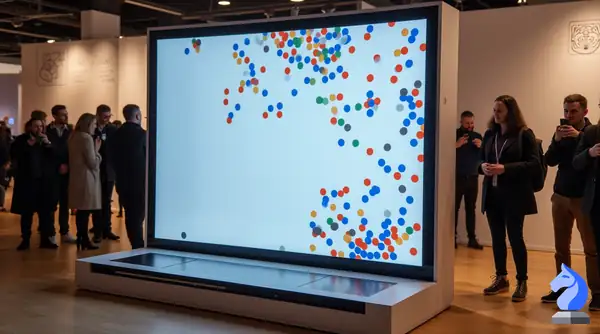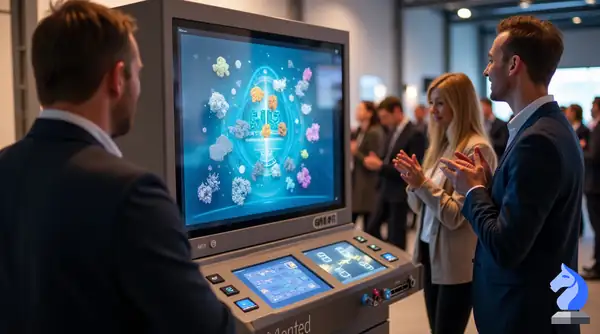
In Sweden, where balance and harmony—lagom—are deeply valued, exhibitions are not just about information; they’re about experience. Adding interactive games to your booth is a modern way to increase footfall, spark curiosity, and leave a lasting impression.
In this article, we’ll introduce 15 exhibition game ideas across four engaging categories for for Elmia Polymer. Whether your goal is brand awareness or meaningful interaction, these ideas are designed to resonate with Swedish audiences who appreciate thoughtful, playful encounters. Our team is here to support your implementation.
When people visit an exhibition, they often appreciate light physical activity—something fun, energizing, and not too complicated. In a society that values simplicity and movement, physical games can be a perfect way to break the ice and attract attention. These games don’t require deep thinking, but they do get people involved—ideal for creating a vibrant booth. For example, take a look at this activation we ran:
Imagine a compact but high-energy obstacle course inspired by the polymer manufacturing process. Participants wear safety-themed gear (e.g., hard hats, rubber aprons) and race through stations symbolizing different steps of plastic production: crawling under “extruder pipes,” hopping over “mixing vats,” and balancing across “conveyor belts.” This setup is large and specialized enough that no one could casually build it at home, ensuring it feels exclusive and worth the booth visit. Each run is timed—fastest finisher of the day claims the top spot on the leaderboard.

Recreate the feeling of operating a large crane at a manufacturing site—except here, it’s a human-powered version. Set up a small, booth-sized rig with elevated rails, a sling or harness, and a secure joystick that participants use to maneuver themselves (or a large claw) to “pick up” oversized polymer pellets scattered around. The physical challenge and the specialized rig make this game visually impressive, draws crowds, and is impossible for a casual fairgoer to replicate. The winner is the person who collects the most “pellets” within two minutes.

Give fair attendees the thrill of an injection molding process with a sporty twist. Design a sturdy, oversize pneumatic cannon that launches lightweight foam “polymer blocks” toward a target shaped like a mold frame. Players need to fire as many blocks into the mold’s open section within a short time limit. This fast-paced, visually impactful setup underscores polymer themes and draws attention through the excitement of launching objects in quick bursts.

These games work well when placed on a digital stand in your booth and can also be extended to your website, social media, or internal communications. In Sweden, digital interaction is expected to be seamless, accessible, and informative. Knowledge-based games are great for educating visitors in a fun way—and they’re easy to adapt for two-player competition. Here’s a sample from one of our past projects:
This game uses the falling-text mechanic to teach visitors about the essentials of polymer quality control. Here’s how it works:
This simple but purposeful game highlights common do’s and don’ts in polymer processing, educating visitors while entertaining them.

If your goal is to boost engagement while maintaining a challenge, this format is ideal. Visitors try to beat a high score, track their own progress, and climb the leaderboard. This game style aligns well with the Swedish love of fair competition and personal improvement. A transparent leaderboard motivates people to participate again and again. Check out this example:
Below are three well-known casual skill games that are quick, fun, and have proven success—offering inspiration for how they might be re-skinned or adapted to the polymer trade fair context.
Below are five fresh casual game ideas specifically designed with a polymer industry flair. Each is quick, skill-based, and can run on touchscreens or mobile devices at a booth—ideal for short, memorable interactions.
Players guide a small conveyor belt at the bottom of the screen, moving it left and right to catch falling polymer pellets of various colors. Certain pellets (e.g., black pellets symbolizing contaminants) must be avoided. The game ends if the player misses too many valid pellets or catches too many contaminant pellets. This fosters quick reflexes and ties neatly to polymer processing accuracy.

In this game, players control the temperature and speed dials on a virtual extruder. Pellets travel through the extruder tube in real-time. If the temperature is too high for too long, the polymer “burns,” and if it’s too low, the flow stalls. Players must quickly adjust the controls to keep the flow optimal for 90–120 seconds. This emphasizes the delicate balance in real-world extrusion processes.

A high-speed tap game where you see a rotating ring divided into segments. Each segment represents a different resin or additive. The ring cycles quickly, and players must tap only when the correct resin lines up with the injection port in the center. A single wrong tap (injecting the incorrect resin) ends the run. It’s a fun nod to precise formulation mixing in polymer production.

Players see an assembly line of small mold templates gliding across the screen. Each template shape requires a specific press-and-release timing to inject “virtual polymer” into it. If you over-press, the mold overflows. If you under-press, the mold is incomplete. The goal is to fill as many molds perfectly as possible within two minutes—highlighting the real-world challenge of injection molding precision.

A top-down digital maze, stylized as a labyrinth of pipes and mechanical gates representing a polymer plant’s layout. Players tilt or swipe to roll a polymer ball from the start to the exit. Obstacles include heated zones (where the ball might melt if it lingers) and coolant chambers (slowing the ball’s movement). The challenge is to find the quickest safe path before the clock runs out.

This format works best when your brand is already well-known, and you want to create excitement. If your product or service is unfamiliar, we don’t recommend starting with this type. Swedes often value fairness and transparency, so be sure your chance-based games feel lighthearted and fun—never gimmicky. Here’s how we’ve used it in the past:



Exhibition games are more than just fun—they’re strategic tools to engage visitors, communicate your message, and differentiate your booth. In a culture that values subtlety and meaningful interaction, gamification offers a respectful and impactful way to connect.
We invite you to explore your options by filling out our Exhibition Game Design Form for Elmia Polymer. You’ll receive a free one-hour consultation and get to see some of our latest creations. Let’s design something unforgettable together.